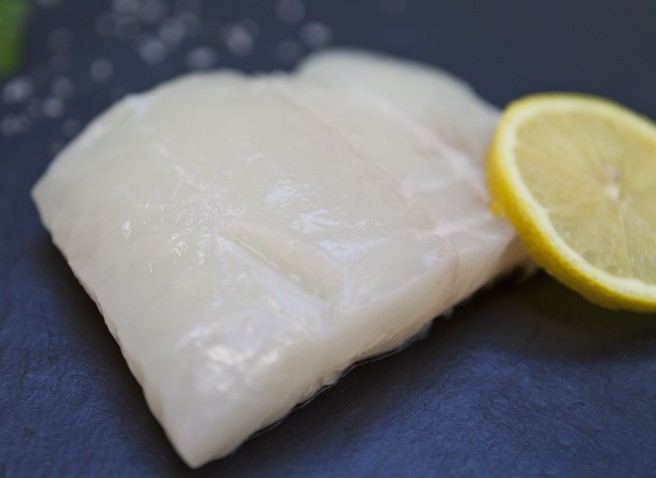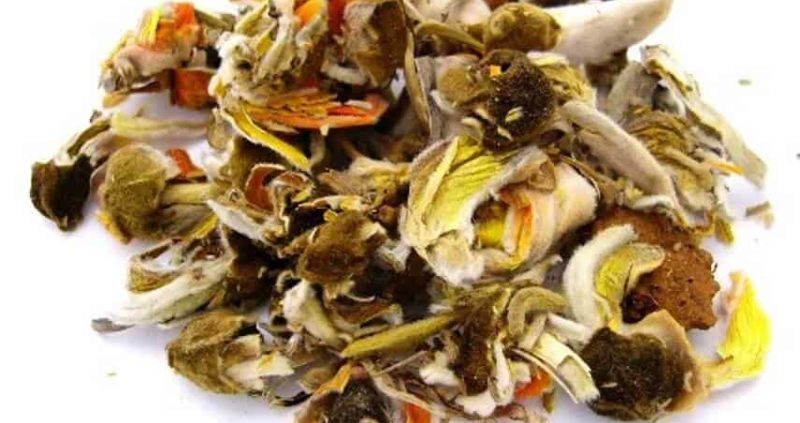Health
Health Benefits of Cinnamon, side effects & more

Table of Contents
Health Benefits of cinnamon.
Today, we are going to see the health benefits of cinnamon, it side effects, how to use it and some cinnamon recipes.
With its bewitching fragrance, it is surely one of the most famous spices in the world, whether in cooking or traditional medicine, especially Ayurvedic: cinnamon. It has been known since Antiquity for its beneficial effects on the body, mainly the effect of its bark.
It appears in ancient Chinese, Sanskrit and Egyptian writings, as well as in the Old Testament, mainly for its medicinal and spiritual properties, more than its flavour. Also called poor man’s insulin, it is credited with miraculous properties, others more reasonable, but in the end: what about?
What variety of cinnamon are we talking about?
As I explain in our article on how to lose weight with cinnamon, there are two varieties, which come from the bark of two very similar, but different species of trees:
- Cinnamomum Verum, known as Ceylon cinnamon, also known as real cinnamon,
- Cinnamomum aromaticum or Cinnamomum cassia, known as cinnamon from Indonesia or China, also known as false cinnamon.
Let’s be clear: to benefit from the virtues of cinnamon, the variety does not matter, they have the same effect. That said, for long term use, we still recommend Ceylon cinnamon.
Indeed, their health benefits are the same, with one exception that makes all the difference: coumarin. It is the coumarin concentration that differs in the two species.
Ceylon cinnamon bark (Cinnamomum Verum) hardly contains any, but on the other hand, Chinese cinnamon bark (Cinnamomum cassia) is rich in it.
Except that coumarin is potentially toxic to the liver because it has hepatotoxic properties. So, for long term consumption, prefer Ceylon cinnamon.
What is the composition of cinnamon?
The nutritional composition for 100g of cinnamon:
•Energy: 266 kcal (13% Recommended Daily Allowance)
•Proteins: 3.96 g (8% of the RDI)
•Carbohydrates: 36.6 g (14% of the RDI)
•Fat: 1.88 g (3% of the RDI)
•Saturated fatty acid: 0.507 g
•Monounsaturated fatty acid: 0.369 g
•Polyunsaturated fatty acids (Omega 3, 6 and 9): 0.228 g
•Fiber: 43.5 g (174% of the RDI)
•Minerals :
•Magnesium: 60 mg (16% of the RDI)
•Phosphorus: 63 mg (9% of the RDI)
•Potassium: 454 mg (23% of the RDI)
•Calcium: 1080 mg (135% of the RDI)
•Manganese: 17.5 mg (875% of the RDI)
•Iron: 18.2 mg (130% of the RDI)
•Copper: 0.339 mg (34% of the RDI)
•Zinc: 1.89 mg (19% of the RDI)
•Selenium: 3.1 µg (6% of the RDI)
Vitamins :
•Vitamin A (Beta-Carotene): 134 µg (17% of the RDI)
•Vitamin E (tocopherol): 1.16 mg (10% of the RDI)
•Vitamin C (ascorbic acid): 11.9 mg (15% of the RDI)
•Vitamin B1 (thiamine): 0.0413 mg (4% of the RDI)
•Vitamin B2 (riboflavin): 0.074 mg (5% of the RDI)
•Vitamin B3 (PP niacin): 1.32 mg (8% of the RDI)
•Vitamin B5 (pantothenic acid): 0.358 mg (6% of the RDI)
•Vitamin B6 (pyridoxine): 0.189 mg (14% of the RDI)
•Vitamin B9 (folic acid): 38 µg (19% of the RDI)
Cinnamon is remarkable for its dietary fibre content and its antioxidant action. It is indeed one of the most antioxidant foods there is, 4th in the ranking of the most antioxidant foods, in particular by its content of Proanthocyanidins and Cinnamaldehyde.
These antioxidants protect the body’s cells from damage caused by free radicals and help prevent diseases associated with ageing.
For information, the TAC index for 2 g of cinnamon, which measures the antioxidant action, is 5 351 μmol, which is remarkable.
What are the health benefits of cinnamon?
Cinnamon mainly has antioxidant, antibacterial and anti-inflammatory properties. It is mainly used to stimulate the immune system, relieve digestive problems and naturally treat type 2 diabetes.
1. Action on the immune system
Cinnamon is ideal for treating all the ailments of winter: colds, coughs, flu and other viruses. Indeed, by its antioxidant properties, its high content of minerals and vitamins, it strengthens the immune system, has antiviral and antimicrobial properties.
How to make a remedy? Boil the equivalent of a cup of water, once boiling, stop the heating and put a heaped teaspoon of ground cinnamon to infuse for 5 minutes, covered.
For an even more effective remedy, add a dash of lemon juice, 1/2 teaspoon of powdered ginger, and sweeten with a little honey. Indeed, the combination of cinnamon, honey and lemon is one of the most beneficial combinations from a health point of view.
2. Action on the digestive system
Cinnamon has anti-inflammatory, antibacterial, anti-virus, anti-parasitic and antiseptic properties. It is, therefore, a portion of food that makes it possible to prevent, and even treat, infections and inflammations of the intestinal flora. Also, it stimulates gastric secretions.
Thus, cinnamon is ideal for calming heartburn, fighting against digestion problems and intestinal ailments (bloating, diarrhoea, indigestion, nausea, vomiting, stomach upsets, etc.).
Regarding viral or bacterial diarrhoea, cinnamon is very effective, see cinnamon against diarrhoea, particularly thanks to its powerful broad-spectrum antibacterial action.
How to make a remedy? Boil the equivalent of a cup of water, once boiling, stop the heating and put a heaped teaspoon of ground cinnamon to infuse for 5 minutes, covered. Sweeten with a little honey and drink after each meal.
3. Action against diabetes and cholesterol
It is certainly one of the most widespread uses of cinnamon, its effect on blood sugar and the level of “bad” cholesterol, used in Chinese and Indian medicine as part of the treatment of type 2 diabetes.
We have devoted a full article on the action of cinnamon on diabetes and cholesterol.
4. Anti-stress action
Cinnamon has relaxing properties, and with its sweet flavour, it is said to be comforting. Thus, it is advisable to consume it in cases of stress and anxiety to help calm down.
How to do? Boil the equivalent of a cup of water, once boiling, stop the heating and put a heaped teaspoon of ground cinnamon to infuse for 5 minutes, covered. Sweeten with a little honey.
5. Action on weight
Between its warming virtues, its digestive properties, its effect on blood sugar, and its appetite suppressant action, cinnamon is one of the spices most used in the context of a diet.
We have dedicated an article on how to use cinnamon in a diet, check it out to find out in detail why and how to use it.
6. Action on degenerative diseases and the brain
It is one of the most antioxidant foods there is, which would give cinnamon a preventive effect on certain degenerative diseases, such as Parkinson’s or Alzheimer’s disease.
It would be beneficial for the brain in general, it would increase the level of sodium benzoate in the brain, which makes it possible to repair and even create neurons, would stimulate brain activity, help eliminate nervous tension. All this makes cinnamon a stimulant of cognitive functions.
How to do? Put cinnamon on the menu, get into the habit of consuming it regularly in food.
7. Effect on headaches and migraine
It would be the warming virtues of cinnamon that would eliminate headaches and migraines due to exposure to the cold.
How to do? Mix cinnamon powder with water to form a paste, apply a thin layer on the forehead for 10-15 min.
8. Action on cancer
Many studies are being carried out on the effect of cinnamon on cancer, in particular thanks to the antioxidant effect of the spice. A study published by researchers from the US Department of Agriculture in Maryland, concludes that cinnamon reduces the proliferation of cancer cells in leukaemia and lymphoma.
This is by no means a cure, but a beneficial food.
9. Action against hair loss
Cinnamon is also used in cosmetics, in particular, to fight against the hair by strengthening the scale of the hair, thus reducing their fragility and therefore their loss. It also stimulates hair regrowth.
Incidentally, cinnamon is used to lighten the hair. Indeed, it contains an enzyme, natural peroxidase, which helps naturally lighten the hair. Your hair will take on a shade lighter than your natural shade, regardless of your hair colour. You will never go from brunette to blonde, but be sure to get an amazing result!
On top of all this, your hair will be nourished, shiny and radiant with beauty!
How to do? We have dedicated an article on cinnamon for hair in which you will find the appropriate recipe.
10. Effect on the skin
With its antimicrobial, antiseptic and anti-inflammatory properties, cinnamon helps prevent and treat acne, reduce pores, and have healthy, clean, and smooth skin.
How to do? Prepare a mask with 3 teaspoons of honey, 1 teaspoon of cinnamon, and 1/2 of nutmeg powder. Apply hot water to the face to open the pores, apply the mask to the face and leave on for about 15 minutes. Rinse thoroughly with lukewarm water and moisturize. To be done once a week.
11. Action on states of fatigue
Cinnamon is a stimulant that helps fight against fatigue. Also, its action on blood sugar stabilizes the sugar level in the blood, avoiding blood sugar spikes, it helps to avoid slumps during the day.
How to do? Consume cinnamon in all its forms, but if you feel tired, chew on a cinnamon stick to keep you awake. You can also add cinnamon to your coffee, a good way to consume cinnamon to fight against temporary tiredness.
12. Action on bad breath and oral health
One of the traditional uses of cinnamon is to treat toothache and act against bad breath. It is also found in many kinds of toothpaste.
With its anti-inflammatory, antibacterial, anti-parasitic and antiseptic properties, cinnamon helps to fight against all mouth aches: canker sores, gingivitis, pain, etc.
How to do? In traditional use, pieces of cinnamon are applied directly to the painful areas to calm the pain. Otherwise, a mixture of a teaspoon of cinnamon and a glass of water, can be used as a mouthwash and gargle against bad breath.
13. Action on the urge to smoke
Among its benefits, cinnamon is recognized as comforting. It has a relaxing, anti-stress and anti-anxiety action, appreciable effects for people who wish to quit smoking, who almost all find themselves in a fairly advanced state of irritability.
Plus, the naturally sweet flavour of cinnamon calms the compulsive cravings that often accompany quitting.
properties of cinnamon are however well known. Indeed, it has warming virtues that are often associated with a rise in libido. Also, it would stimulate the secretion of hormones.
15. Effect on breastfeeding
Cinnamon is a galactogenic spice, that is to say, it helps stimulate the secretion of breast milk in breastfeeding women.
16. Action against muscle pain
Cinnamon has relaxing and anti-inflammatory properties, so you can relieve sore muscles by massaging the painful area with a cinnamon-based preparation.
How to do? Mix a teaspoon of cinnamon powder with a tablespoon of honey and 2 tablespoons of lukewarm water. Use it as a massage oil.
Some beneficial associations
Here are the beneficial associations for:
Improve digestion: aloe vera, or turmeric, or star anise, ginger, mint.
Stimulate the immune system: lapacho, or nigella, or black garlic, or maca, etc.
Anti-fatigue stimulant: nettle leaves, or guarana, or powdered baobab, etc.
bad breath and oral health: cloves, or fennel, or cardamom, etc.
Help against stress: vanilla, or valerian, etc.
How to consume cinnamon?
Even if it is advisable to heat cinnamon to take advantage of its virtues, the important thing is to consume it regularly, whatever the way: in cooking, in infusion, with honey or even in the external application.
In the kitchen
Cinnamon is widely used in cooking, whether in salty or sweet cooking. In the West, whether in Europe and North America, it is mostly cooked in sweet dishes, while in the Maghreb and the East, it is used in savoury dishes.
For ideas, check out our cinnamon-based recipes.
Keep in mind, however, that in salty cooking, it is preferable to add the cinnamon powder at the end of cooking, because its sweet flavour will “caramelize” and bring bitterness to the dish. If you are using cinnamon sticks, you can use it anytime.
In infusion
My favourite use is the fastest and probably the most effective, especially if you want to combine cinnamon with other ingredients.
Boil the equivalent of a cup of water, once boiling, stop the heating and put a heaped teaspoon of ground cinnamon, or between 3 and 5 g of sticks, to infuse for 5 minutes, covered. You can add ingredients of your choice to this infusion.
It is also possible to infuse cinnamon in milk to prepare good cinnamon milk, a simple, delicious recipe, and a good way to enjoy the benefits of cinnamon while feasting.
In external application
Whether it is for the skin, for the hair, or in massage, we can use cinnamon externally, there are many ways to do this, for example:
Mix ground cinnamon with a little water until you obtain a cinnamon paste that you will apply to the area to be treated, for example on damp hair for at least 5 hours, or on the skin for 15 minutes, before rinse thoroughly
Mix a tablespoon of ground cinnamon with 4 tablespoons of honey and a tablespoon of argan oil. Apply to skin or hair
For hair, you can add cinnamon powder to your conditioner before applying it
Cinnamon associated with honey
This is one of the most beautiful associations there is, both for taste and virtues for health.
We have devoted an article dedicated to the recipe and the virtues of honey with cinnamon, consult it to find out more.
As a replacement for sugar
Use cinnamon powder to sweeten your teas, infusions, coffees, white cheeses, yoghurts, in short: all your sweet preparations. If you’re not completely replacing sugar, adding cinnamon will at least reduce the amount of sugar.
Cinnamon to breathe
This is a tip for dieters who suffer from sweet cravings. Indeed, it is enough to smell the cinnamon for it to have an appetite suppressant effect, in any case on the sweet desires.
In a spice jar, put a vanilla bean, a little citrus zest (orange, grapefruit, etc.), and of course, cinnamon, ideally crushed. If you have a craving, inhale the mixture for a good minute.
In capsules or essential oils
There are capsules and essential oil of cinnamon if you want to take advantage of the properties of cinnamon as well, refer to the instructions for use.
Contraindications and side effects of Cinnamon
As already specified, if you opt for Chinese cinnamon, in high doses, it will be toxic for the liver, unlike the Ceylon cinnamon that we recommend.
Consult the dangers and side effects of cinnamon to learn more about the contraindications associated with consuming cinnamon.
As a precautionary principle, cinnamon is not recommended for pregnant women, nursing mothers, babies under 6 months (see cinnamon and children ) and people with hypertension or with high blood pressure values.
At high doses, and in prolonged external use, cinnamon can be dermocaustic and can therefore cause burns. It is also strongly advised not to use it on sensitive parts of the skin, such as the lips.
Still in overdose, cinnamon can cause nausea, headaches, and heart palpitations.
Cinnamon contains coumarin, a blood thinner, taking cinnamon and another blood thinner, natural or medicated, is dangerous. Similarly, cinnamon should not be taken in parallel with a drug prescribed for cardiovascular disease, to stabilize diabetes, or against ulcers.
Health
Managing Chronic Pain: Integrative Techniques for Wellness

Key Takeaways
- Understanding chronic pain and its various treatment options is essential for effective management.
- Lifestyle factors, including diet, exercise, and sleep, can significantly influence chronic pain.
- Integrative techniques, including medical treatments and complementary therapies, are vital in tackling pain holistically.
Understanding Chronic Pain
Chronic pain is a persistent type of pain that can last for months or years and may be caused by various factors. In contrast to acute pain, it can continue even after the original injury has healed. Healthcare professionals evaluate a patient’s self-reported pain level and the impact it has on their daily activities to address the complexity of chronic pain. When the underlying cause is unknown, multidisciplinary approaches are necessary to relieve pain.
The Role of Lifestyle in Chronic Pain Management
In the quest for relief, many find solace in discovering a reputable pain clinic near me that employs a range of treatment options. Diet and chronic pain have a significant, if not entirely understood, relationship. Pro-inflammatory foods, excessive caffeine, alcohol, and refined sugars tend to exacerbate inflammation, potentially intensifying pain. On the other hand, anti-inflammatory foods such as fatty fish, greens, nuts, and seeds may help reduce inflammation and, as a result, pain. Consistent hydration and balanced meals can support the body’s natural coping mechanisms. Creating a personalized diet plan with a nutritionist or dietician can be a proactive step in managing chronic pain through lifestyle. Being physically active is critical to managing chronic pain.
Medical Treatments for Chronic Pain Relief
Medications often serve as the first line of defense in chronic pain management. NSAIDs, for example, are commonly used to alleviate inflammation and pain. Antidepressants and anticonvulsants can also be prescribed for their pain-relieving properties. Caution must be taken, especially with more robust, potentially habit-forming medications such as opioids; these should only be used when necessary and with a strict plan for monitoring and tapering. Furthermore, patients are encouraged to ask their healthcare providers about potential side effects and interactions with other medications.
Beyond pharmacological measures, interventional treatments like nerve blocks, epidural steroid injections, and radiofrequency ablation offer non-surgical pain relief for various conditions. In some cases, these targeted procedures may provide lengthy periods of relief and help patients engage in physical therapy and rehabilitation more effectively.
With chronic pain being such a dynamic and individualized issue, research into new therapeutic methods is ongoing. Treatments such as platelet-rich plasma therapy (PRP) and stem cell injections are emerging as potential alternatives. They focus on repairing damaged tissues and reducing pain naturally. However, consulting with experienced pain management specialists before considering these advanced options is essential.
Psychological Approaches to Pain Management
Chronic pain has deep psychological and emotional roots in addition to physical causes. Therapies like Cognitive Behavioral Therapy (CBT) address the thought patterns that can worsen pain perception and decrease the quality of life. Patients can learn to change these thoughts, engage in positive behaviors, and develop strategies to manage setbacks in their pain journey. Biofeedback is a technique that measures and provides real-time data on bodily functions, such as heart rate, muscle tension, and skin temperature. It helps patients gain voluntary control over these functions, and mastering such autonomic processes can improve pain management and give a greater sense of personal power.
Emotional well-being is integral to pain management, as negative emotions can intensify pain perception. Healthcare providers may recommend therapy sessions to address the psychological impacts of chronic pain, helping individuals cope with associated feelings of frustration, depression, or isolation. These therapeutic approaches highlight the importance of treating chronic pain as a comprehensive, biopsychosocial condition.
Navigating the Healthcare System
The complexity of healthcare systems can add a layer of stress for those managing chronic pain. Advocacy is critical. Patients must feel empowered to ask questions and make informed decisions regarding their care. Understanding how health insurance works, what treatments are covered, and how to access necessary medications is imperative. Healthcare professionals can also be invaluable allies in helping patients navigate these systems and ensure that they receive appropriate and timely care.
Looking Ahead: The Future of Pain Management
As we learn more about pain, there is hope for better pain management through new treatments and technologies. For example, virtual reality therapies can help distract patients from pain and reduce its intensity by immersing them in relaxing environments. Scientists are also exploring innovations in pharmaceuticals, non-invasive brain stimulation techniques, and cognitive behavioral therapy apps to treat chronic pain more effectively. Additionally, personalized medicine, which considers an individual’s genetic makeup, lifestyle, and environmental factors, is set to revolutionize pain management.
Health
10 shocking health benefits of eating white fish

Table of Contents
Health
5 Health benefits of butea superba and side effects

Table of Contents
-

 Food2 months ago
Food2 months ago8 shocking benefits of leek juice and side effects
-

 Food2 months ago
Food2 months ago10 + Benefits of carrot juice and side effects
-

 Health2 months ago
Health2 months agoBenefits of guava leaves Sensually
-

 Health2 months ago
Health2 months ago10 shocking health benefits of Canary seed milk
-
Weight Loss2 months ago
Chrissy Metz Weight Loss Secret (2022)
-

 Health2 months ago
Health2 months ago7 health benefits of cashew leaves and side effects
-

 Weight Loss2 months ago
Weight Loss2 months agoKelly Osbourne weight loss 2022
-

 Food2 months ago
Food2 months agoHealth benefits of gongolili or vetiver and side effects
